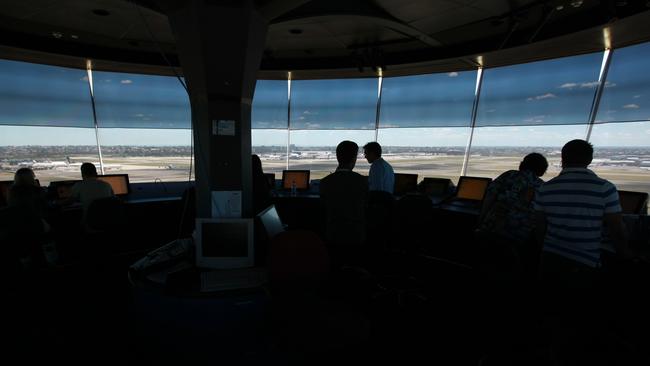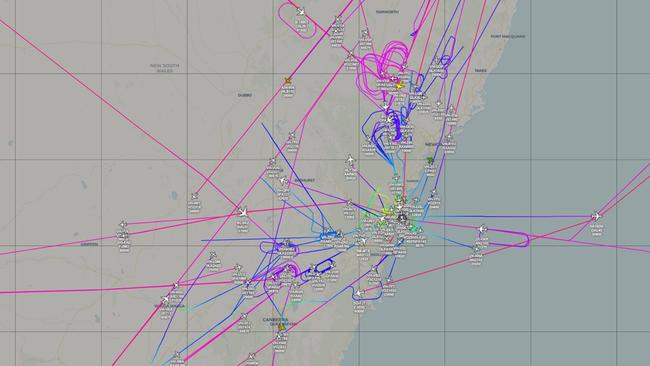All too frequent flight delays at Sydney Airport, blamed on air traffic control sickies
Staff shortages at the air traffic control tower due to sickness are most often to blame for the all-too-frequent instances of runway restrictions at Australia’s biggest gateway.

Frustration is growing within airlines and Sydney Airport, after the 18th day of air traffic control-enforced delays since February 17.
Staff shortages at the air traffic control tower due to sickness are most often to blame for the all-too-frequent instances of runway restrictions at Australia’s biggest gateway.
On Monday, flights were again placed into holding patterns or held at their departure airports, in an effort to reduce the arrival rate into Sydney.

Airlines and Sydney Airport confirmed they had been told staff shortages were to blame for Monday’s restrictions, with a number of services experiencing delays of 40 to 60-minutes.
An Airservices Australia spokeswoman said there had been “some short-notice, unplanned air traffic controller leave” in Sydney, but that had no impact on service delivery.
Instead, it was the potential for bad weather that had prompted air traffic control to delay some flights at their departure airport, she said.
“The (ground delay program) is in place due to forecast heavy showers and thunderstorm activity in the Sydney basin and runs until 10pm local time with an average aircraft delay from their point of origin of 13.5 minutes,” the spokeswoman said.
“Airborne delays may still occur depending on weather conditions and airline compliance with GDP.”
In the past 24-days, the ground delay program had been used by Airservices Australia on 18 occasions at Sydney Airport, reducing arrivals from 50 an hour to as little as 32 in peak periods.
Monday’s delays came as the Australian Transport Safety Bureau launched an investigation into a Qantas flight from Chile that was diverted to Newcastle from Sydney on February 18.
The decision to investigate was made after The Australian revealed staff shortages at Sydney’s air traffic control on that day meant the pilots were not given up-to-date weather information.
As a result, the flight burnt up valuable fuel before it became apparent they would have to divert to Newcastle, where there were no facilities to process international passengers.
“During the approach (to Sydney) the aircraft encountered moderate turbulence and high wind conditions and the approach became unstable,” said the ATSB investigation brief.
“The crew conducted a missed approached and advised air traffic control of minimum fuel conditions. The crew diverted the aircraft to Williamtown (Newcastle) where ground handling equipment was not sufficient for the aircraft size.”
The ATSB investigation was expected to focus on the circumstances of the diversion, which saw passengers stranded at Newcastle Airport for seven hours, following the 14-hour flight.
The incident prompted an internal complaint by the Sydney air traffic control manager, about the issues that arose due to three controllers having to do the work of five.
In a formal report to Airservices, the traffic manager said there was “controller overload, failure to report reportable matters, failure to provide flight information and failure to issue a hazard alert”.
“Meteorology products were not disseminated and broadcast as per the flight information service provisions,” said the complaint.
“This information was vital to pilots, including (Qantas flight) QF28, which diverted to Newcastle while operating on minimum fuel.”
Information about an unauthorised drone operating in the vicinity of Sydney Airport was also not followed up, with no hazard alert issued.
Airlines have raised concerns with Airservices about the impact of staff shortages at air traffic control on their own operations, but are yet to get a response.
The ATSB investigation is expected to be finalised by late September.




To join the conversation, please log in. Don't have an account? Register
Join the conversation, you are commenting as Logout